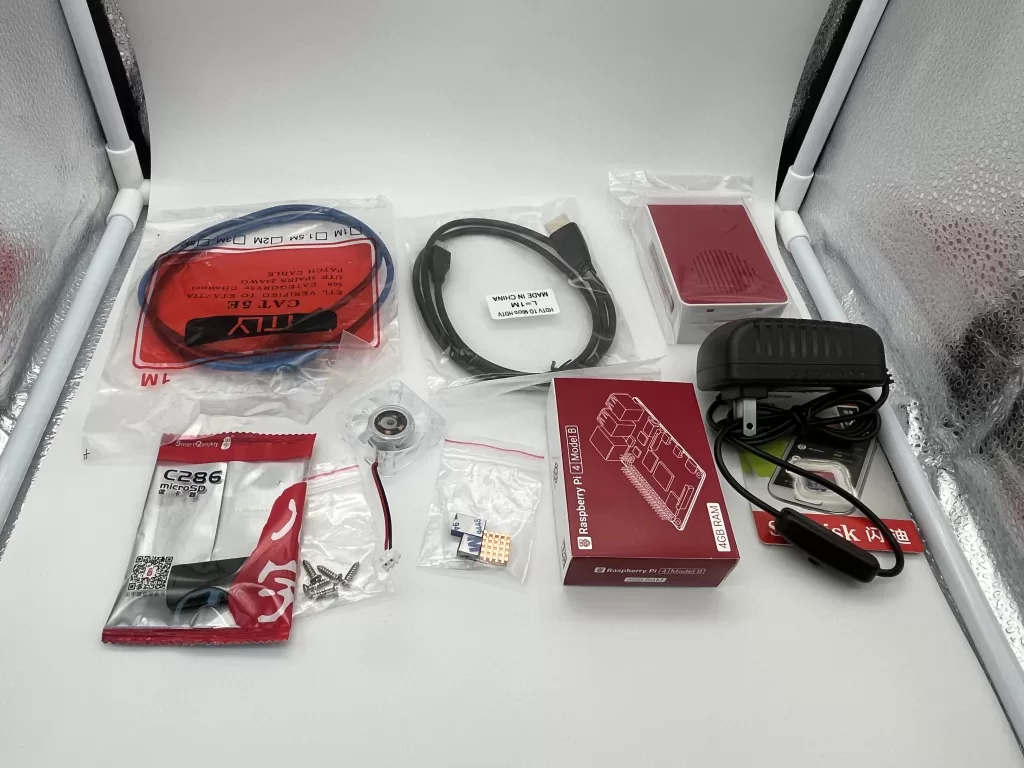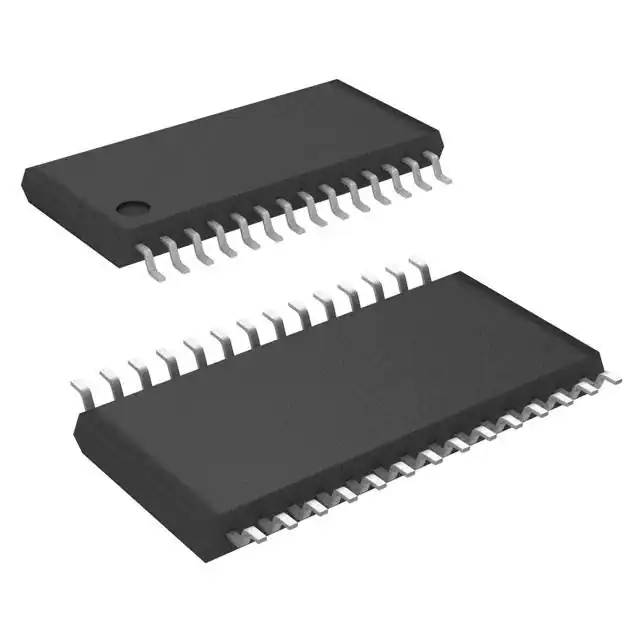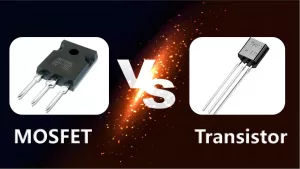In this blog, we will delve into the heart of this comparison, exploring their individual functions, locations, and how they work together to achie...
View detailsLinear Actuators Explained: Pushing and Pulling with Precision
In this blog, we will delve into the world of linear actuators, exploring their inner workings, and applications.
What is a Linear Actuator?

A Linear Actuator is fundamentally an electromechanical apparatus that converts rotational motion into linear motion. It is comprised of an electric motor, a mechanical transmission system, and a linear displacement mechanism that translates rotating motion. Depending on the particular kind of linear actuator, this conversion mechanism can take on several shapes.
Types of Linear Actuators
Here's an overview of some common types:
- Ball Screw Actuators: These actuators work with a ball screw mechanism that has recirculating ball bearings and a threaded screw. There are various benefits to this design:
- High Efficiency: Ball bearings reduce friction between the nut and the screw, which leads to a smooth and efficient operation.
- Precise Positioning: Accurate and consistent linear movement is made possible by the exact fit between the screw and the ball bearings.
- High Load Capacity: Because of their sturdy design and lower friction, ball screw actuators can manage heavier loads than other varieties.
- Lead Screw Actuators: Compared to ball screw actuators, lead screw actuators are simpler and less expensive. They have a threaded lead screw and a nut that converts rotation into linear movement. But they might encounter:
- Higher Friction: There is more friction created by the sliding contact between the nut and screw, which could wear the nut down and reduce efficiency.
- Less Precise Positioning: Compared to ball screw actuators, lead screw actuators may move with a little less accuracy because of the sliding friction.
- Lower Load Capability: Compared to ball screw types, the frictional forces limit the load-bearing capability of lead screw actuators.
- Hydraulic Actuators: Actuators that use pressurized hydraulic fluid to produce force and accomplish linear motion are known as hydraulic actuators. They provide:
- High Force Capabilities: Due to their ability to produce incredibly high forces, hydraulic systems are well-suited for heavy-duty industrial uses including moving machinery and powering construction equipment.
- Fast Speeds: Hydraulic actuators are perfect for jobs needing forceful or speedy placement since they can produce rapid extension and retraction movements.
- High Power Density: Considering their size and weight, hydraulic systems can exert a significant amount of force.
- Pneumatic Actuators: Powered by compressed air, pneumatic actuators are a hygienic and effective choice for applications needing:
- Rapid Movement: Pneumatic systems can reach fast actuation speeds for quick positioning or repeating motions, just like hydraulic actuators can.
- Frequent Starts and Stops: Air's compressibility makes it possible for it to start and stop smoothly, which makes it appropriate for applications involving frequent cycling.
- Cost-Effectiveness: Pneumatic actuators are a more cost-effective option for moderate force requirements than hydraulic actuators since they are often less expensive.
- Linear Motors: By using electromagnetic principles, linear motors produce linear force directly, in contrast to conventional electric actuators that rely on rotary-to-linear conversion devices. They provide:
- High Speeds and Precision: High-performance applications like robotics and semiconductor production benefit greatly from the remarkable speeds and positioning accuracy that linear motors can attain.
- Minimal Maintenance: Because there are no moving parts or mechanical gearboxes, there is less wear and tear and hence less maintenance needed.
- Clean and Quiet Operation: Linear motors are ideal for use in delicate situations because of their quiet and clean operation.
Why are Linear Actuators Used?
Linear actuators offer several advantages that make them a popular choice for various applications. Here are some key reasons why they are so widely used:
- Precise Linear Motion: Because linear actuators can move in a controlled and precise manner, they are the best choice for jobs that need to be positioned precisely.
- Versatility: Linear actuators can be customized to fit a variety of applications due to their availability in a variety of motor types, transmission methods, and load capacities.
- Clean and Effective Operation: Most linear actuators are powered by electric motors, which provide a more effective and environmentally friendly option than hydraulic or pneumatic systems.
- Easy Installation and Maintenance: Linear actuators are frequently less complicated to install and maintain than more intricate motion control systems.
- Compact Design: A lot of linear actuators have lightweight, space-saving designs that make them ideal for applications where there is limited room.
Video related to Linear Actuators
How Does a Linear Actuator Work?
The basic principle behind linear actuator operation can be broken down into three key steps:
- Motor Power: The actuator's core is an electric motor, which generates the rotational force needed to start motion. Stepper motors, DC motors, and AC motors are common motor types used in linear actuators; each has unique speed, torque, and control properties.
- Power Transmission: Next, a mechanical transmission system receives the rotational power from the motor. This system may consist of belts, screws, gears, or a mix of these components. The actuator's travel distance, speed, and output force are all determined by the particular type of transmission mechanism used.
- Linear Conversion: The last phase entails translating the transmission system's rotating motion into linear motion. A device that converts the rotation into the intended linear push or pull action accomplishes this. Lead screws, ball screws, rack and pinion systems, and belt drives are examples of common conversion methods.
How to Make a Linear Actuator?
- Prepare the Sliding Block: To prepare the sliding block, drill a hole in the middle of it to fit the threaded rod. Make sure the threads can pass smoothly through the hole size.
- Secure the Nut to the Sliding Block: Through the drilled hole, fasten one of the nuts to the sliding block with a screw or bolt. This nut will convert the threaded rod's rotation into linear motion.
- Mount the Motor: Screws, nuts, and brackets are used to mount the motor to a base plate. Verify that the threaded rod and the motor shaft are in line.
- Attach the Coupling: A flexible coupling is used to join the motor shaft to the threaded rod. This permits slight misalignment of the rod and motor.
- Secure the Threaded Rod: Tie the other nut to one end of the threaded rod to secure it. The rod can be secured to another structure or the base plate using this nut.
- Connect the Power Source: According to the instructions included with the motor, wire it to the power source (DC power supply or battery pack). When evaluating connections and voltage, a multimeter might be useful.
How to Calculate Linear Actuator Position?
When working with linear actuators, calculating the achievable position is crucial. Here's a breakdown of the key factors involved:
- Motor Specifications: Two crucial parameters are the motor's revolutions per minute (RPM) and rotational speed.
- Gear Ratio: The ratio of the lead screw or other conversion mechanism to the motor's output shaft establishes how rotations are translated into linear travel.
- Lead Screw Pitch: The distance the translating element or nut travels along the screw with each full revolution is referred to here.
The theoretical linear speed and travel distance of the actuator can be found by multiplying the motor's RPM by the gear ratio, then multiplying the resulting number by the lead screw pitch. It's crucial to take into account elements like potential load resistance and mechanical efficiency, which may have a small impact on the actual position that can be reached.
Where are Linear Actuators Used?
The versatility of linear actuators extends far beyond factory automation. Here are some specific examples of their applications in various industries:
- Construction: Excavator arms, crane booms, and automated welding systems are all operated by linear actuators.
- Agriculture: They are used in harvesting machinery, greenhouse ventilation controls, and automated feeding systems.
- Aerospace and Defense: In airplanes, these actuators are employed for antenna positioning, landing gear deployment, and flight control surfaces. They are also used in military applications like guidance and stabilization systems for weapons.
- Transportation: In contemporary cars, linear actuators are used in sunroof mechanisms, door controls, and seat adjustments.
- Consumer Electronics: For accurate disc movement, optical drives in CD and DVD players may use linear actuators. Furthermore, tiny linear actuators may be used in high-end smartphone camera lenses to provide optical zoom capabilities.
Linear Actuator Examples
Beyond industrial settings, linear actuators are surprisingly present in many everyday applications:
- Electric Vehicle Seats: Power seat adjustments are made possible by linear actuators in contemporary automobiles to improve comfort and ergonomics.
- Furniture: For easy positioning, linear actuators are frequently used in height-adjustable desks and ergonomic chairs.
- Home Automation: Automated Control of Smart Blinds and Window Shades with Linear Actuators in the Home Automation System.
- Security Systems: Retractable bollards, security cameras, and automatic gates can all be operated by linear actuators.
- Medical Devices: Medical gadgets such as patient transfer devices, surgical robots, and adjustable beds rely on linear actuators to function properly.
Conclusion
Automation in many different industries has relied heavily on linear actuators because of their capacity to precisely translate rotary motion into linear movement. These multifunctional tools are essential for optimizing workflows and improving functionality, from the deft manipulation of robotic arms to the forceful modifications of large machines. To complete your project, select the ideal pusher or puller by being aware of the many kinds of linear actuators, their uses, and the important selection factors.
Ella
Ella is a skilled embedded systems engineer with experience in PCB design and microcontroller programming. She is committed to following the most recent developments in the field and is constantly seeking for ways to apply them to her work.
WEW ALL POSTS BYElla-
MAP Sensor vs MAF Sensor: Understanding the Differences between Them 523
-
Thermal Fuse Testing Procedure: A DIY Guide for Dryer Owners 139
In this blog, we will empower you to test and potentially replace your dryer's thermal fuse, saving you time and money.
View details -
Installing a Micro SD Card: A Step-by-Step Guide 107
In this blog, we will walk you through the steps of installing a micro SD card, ensuring you unlock its potential with ease.
View details -
Comparison of MOSFET and Transistor: Unveiling the Electronic Duo 304
Transistors and MOSFETs are fundamental components in the field of electronics that allow for signal processing, switching, and amplification. Even...
View details -
Multiplexer vs Demultiplexer: Key Differences and Applications 237
In this blog, we delve into key differences, working principles, and diverse applications of Multiplexer and Demultiplexer.
View details -
Demystifying Parallel Resistor Calculator: Simplifying Circuit Design 24
In this blog, we will not only guide you through using a parallel resistor calculator but also delve into the underlying concepts, empowering you t...
View details
 Ampheo Electronics
Ampheo Electronics






